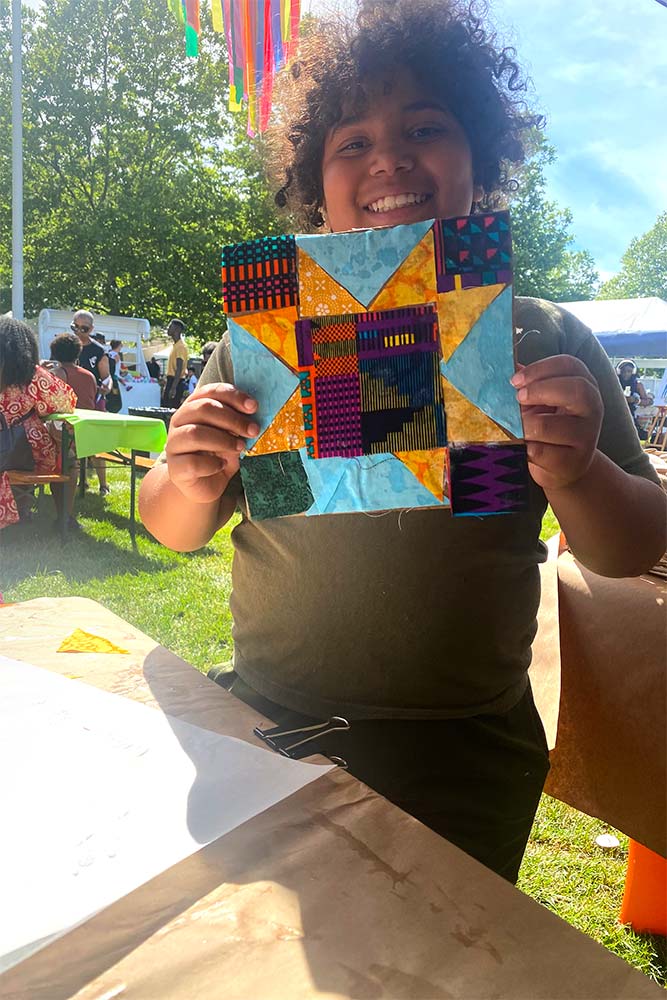Cuyahoga County’s arts organizations received a financial boost on election day on Tuesday, Nov. 5, with the passage of Issue 55. The measure, approved by about 70% of Cuyahoga County voters, replaced and expanded a cigarette tax that funds Cuyahoga Arts & Culture’s (CAC) contributions to the local creative scene.
“We are really thankful that Cuyahoga County voters and residents believe the arts are an important part of their community,” CAC executive director Jill Paulsen said in an email. “The passage of Issue 55 extends CAC’s grantmaking ability to 2035, and that means we can continue to support hundreds of nonprofit arts and culture organizations that serve residents in every zip code in Cuyahoga County. We are excited about—and grateful for—that opportunity.”
CAC is an independent political subdivision with board members nominated by the county. Its funding derives from a cigarette tax first approved by voters in 2006, then passed again in 2015.
The organization announced in late April it would seek a tax levy replacement and increase on the November ballot. While declining cigarette sales reduced revenue, the passage of Issue 55 has increased CAC’s annual spending from $10 million to $16 million. Since 2007, the organization has made over 4,000 grants to 485 nonprofits, totaling $247 million.
The 10-year tax is expected to raise $160 million for CAC, which funds thousands of free arts and cultural events across Cuyahoga County. As the region’s foremost creative arts support entity, CAC gives grants to large-scale nonprofits and smaller community-based groups alike.
Beefing up budgets
Oh Sew Powerful offers free instruction for beginners and experienced sewists in the Lee-Harvard-Seville-Miles neighborhood—with programming to inspire its participants in their creative interests for positive emotional and mental health benefits.
The organization is projecting a budget of $15,000 to $17,000 for 2025. With support from CAC, Cleveland Foundation, and the Cuyahoga County Board of Developmental Disabilities, the group’s funds are largely used for staffing, materials, and facility fees, notes founder Paula Coggins.
 An artists shows off her quit creation at an Oh Sew Powerful eventFor instance, Coggins says the recent purchase of a quilting machine may necessitate more space, beyond the space Oh Sew Powerful currently has at Ingenuity Cleveland and the Frederick Douglass Resource & Recreation Center.
An artists shows off her quit creation at an Oh Sew Powerful eventFor instance, Coggins says the recent purchase of a quilting machine may necessitate more space, beyond the space Oh Sew Powerful currently has at Ingenuity Cleveland and the Frederick Douglass Resource & Recreation Center.
“A quilting machine takes up space,” says Coggins. “We have classes at Frederick Douglass, but we can’t store anything there, so we have to pay storage fees somewhere.”
Class participants make clothing, decorative crafts, and fiber art at no cost. Coggins explains she would also like to use Ingenuity lab space to create quilts pieced together from t-shirts—a popular money maker. She says her hope is that the quilting classes will spark the development of new quilting startups in the area.
Naturally, providing this kind of instruction takes money. Though Coggins requested $15,000 from CAC this year, Issue 55 putting more funding in the till may “beef up” her next ask, she notes.
“I think everyone in the arts and culture field are feeling a lot more optimistic with [Issue 55’s] passage,” Coggins says. “We know that smokers don’t want to pay another penny-and-a-half per cigarette, but that money is going to a good cause.”
A boost to the arts ecosystem
BAYarts received a $42,579 grant from CAC last November, with the dollars mostly earmarked for staff salaries along with marketing and operational costs.
With a yearly $1 million budget, BAYarts does not have the challenges of smaller, more cash-strapped organizations, yet the additional funding garnered post-Issue 55 is essential for continued operations, says executive director Nancy Heaton.
 BAYarts second annual Fall Fest“Nonprofits are not known for big incomes or benefits, so most people are doing it out of passion,” explains Heaton. “This [money] keeps the utilities on and helps us keep our staff. It also lets us pay artists and teachers what they’re worth because this is people’s income.”
BAYarts second annual Fall Fest“Nonprofits are not known for big incomes or benefits, so most people are doing it out of passion,” explains Heaton. “This [money] keeps the utilities on and helps us keep our staff. It also lets us pay artists and teachers what they’re worth because this is people’s income.”
CAC will receive the increased tax revenue in March 2025, which will influence grants made in 2026 and beyond. In a Nov. 5 press release, executive director Paulsen highlighted the importance of the new tax to the region’s arts ecosystem.
“CAC funds a wide range of organizations that make arts and culture experiences available to residents in every corner of Cuyahoga County,” CAC’s Paulsen says. “With this funding, CAC will continue to be a reliable resource and provide core support for the nonprofits that make our community such a special place.”
Sewing nonprofit founder Coggins uses funding to pay her instructors fairly—always a tricky proposition in the nonprofit arts space, she says. Given the nationwide decline of home economics instruction in schools, Coggins says she feels obligated to provide everyone with an accessible sewing education.
Ideally, the extra funding from Issue 55 will further this goal, she says.
“I grew up taking sewing in school, but the average person today can’t afford to take their kids to lessons,” Coggins says. “I’m going to continue to offer free sewing, so I have to figure out how to make money to continue that mission.”
